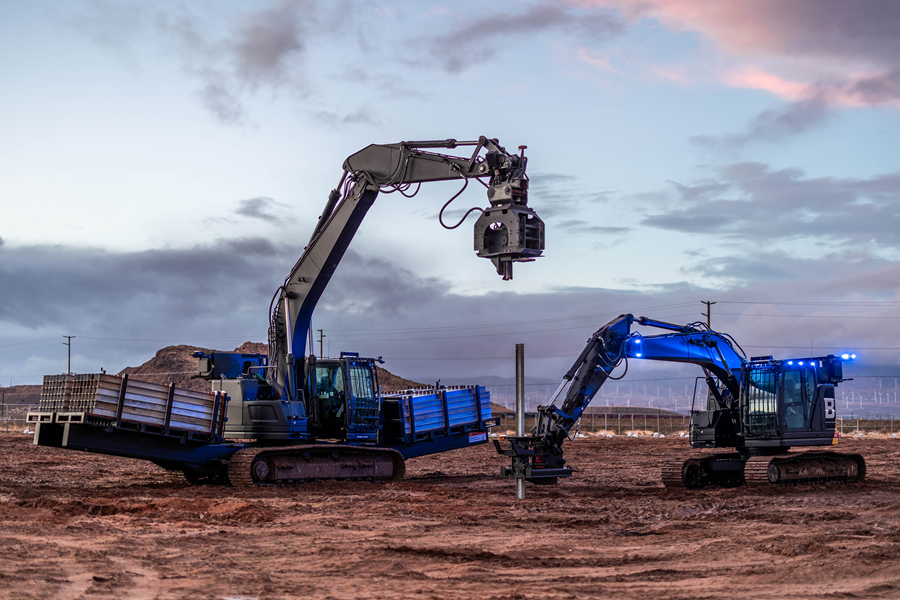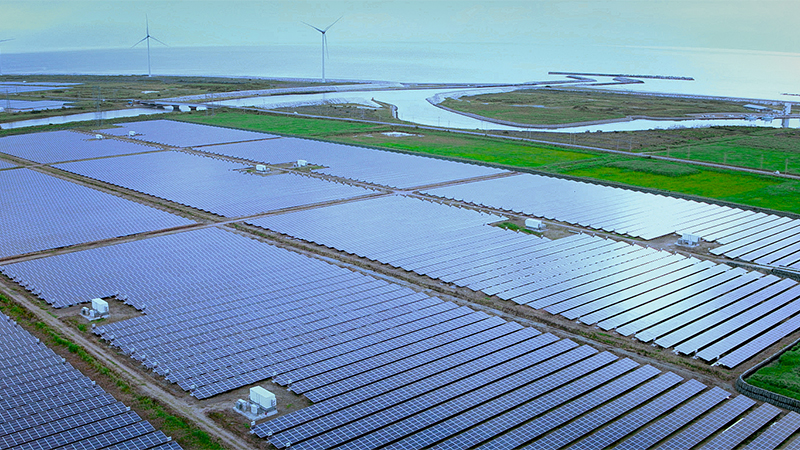VISIONS Magazine (September 2025 Edition)
Building Safer, Smarter Solar Projects
Built Robotics and Blattner Forge New Path

When it comes to utility-scale solar construction, safety and efficiency often stand at odds, but a new three-year agreement between Blattner, a leader in renewable energy construction, and Built Robotics, a pioneer in construction AI, is proving that the two can go hand in hand.
Blattner will deploy dozens of Built’s AI-powered robots across U.S. solar projects, where they will assist crews with pile driving, surveying, material handling, drilling, and trenching. The collaboration reflects a growing industry-wide shift toward automation—one aimed at protecting workers while accelerating the clean energy transition.
A Real-World Validation of Robotics
For Erol Ahmed, Vice President of Communications at Built Robotics, the agreement is more than just a contract. “The three-year agreement between Built Robotics and Blattner is a significant real-world validation of Built’s technology. It demonstrates value in two key areas: safety and efficiency.”
Ahmed explained that pile driving has long been one of the most dangerous tasks in solar construction, exposing workers to risks ranging from heavy machinery strikes to repetitive strain injuries. “By deploying autonomous robots like the RPD 35, workers are removed from direct exposure to this dangerous activity. They can now supervise the robots from a safe distance. This not only mitigates the risk of serious injuries but also makes project execution safer and more predictable. The fact that the robots have a track record of zero injuries on previous projects is a powerful testament to their safety value.”
Efficiency, Ahmed added, is equally critical. “Built’s technology automates repetitive, labor-intensive tasks like pile driving, surveying, material handling, drilling, and more. The deployment of these AI-powered robots has already shown a positive impact on project schedules and quality on the previous projects Built worked on with partners. By automating these processes, the technology helps accelerate project timelines and deliver certainty to partners, which is crucial in the fast-paced solar industry. To meet the growing demand of electricity, we must automate parts of the construction process.”
Seth Nishida, VP & Group General Manager of Strategy & Investment for Business Innovation Group, said SCOA has been supporting Built Robotics since the initial investment in 2017 and has seen their growth firsthand.
“They have demonstrated a high level of autonomous capabilities in different use cases throughout the company's history and now shifted their focus on pile driving for large solar farm projects. With this first-of-a-kind long term contract with Blattner, we surely will unlock more opportunities in this growing market, and we look forward to creating the Robot-as-a-Service model together.”
Closing the Labor Gap with the RPD 35
One of the standout technologies powering this partnership is Built’s RPD 35 robotic pile driver—a system that combines surveying, pile distribution, driving, and as-builts into a single autonomous platform, according to Ahmed.
“The RPD 35 is a game-changer in solar piling because it directly addresses the construction industry’s labor gap by enabling crews to achieve unprecedented levels of productivity. Instead of skilled workers manually performing the time-consuming and dangerous task of pile driving, the RPD 35 automates those four key processes.”
With the ability to run up to 24 hours a day, the RPD 35 not only increases speed but also ensures precision.
“Beyond just speed, automation with the RPD 35 also ensures high-quality, precise installations that are essential for utility-scale solar farms. The robot utilizes RTK GPS, lasers, and advanced sensor fusion to achieve sub-centimeter accuracy, ensuring that each pile is placed correctly the first time. This level of precision meets the strict tolerances of solar tracker manufacturers and significantly reduces the need for costly and time-consuming rework. By taking on the repetitive and dangerous work, the RPD 35 not only increases productivity but also frees up skilled workers to focus on more complex tasks, ultimately helping to close the labor gap while maintaining project quality and speed.”
Safety as a Differentiator
Built Robotics’ reputation in the solar construction industry rests heavily on its uncompromising approach to safety. “Built Robotics’ ‘8-Layer Safety System’ is not just a feature, it’s a core component of the value of automation. Its evolution and importance as a differentiator began through continuous integration during field deployments.”
That system is designed with redundancy at its core, ensuring reliable operation across varied conditions.
“The safety system has been refined through extensive real-world use on many construction projects. The system is engineered with redundant layers to ensure reliable operation with one layer intercepting what another layer may have missed. Each robot is equipped with sensors and software that detect obstacles and safety conditions, immediately stopping if an error occurs. ‘Guardian,’ a remote cloud-based monitoring solution, provides another layer of redundancy, acting as a ‘backup plan for the backup plan.’ Our AI-powered smart cameras form the cornerstone of a complex and responsive obstacle detection system that keeps people safe around the machine.”
And for Ahmed, the results speak for themselves. “For a company working with heavy, autonomous machinery, a perfect safety record is a powerful differentiator. Built’s track record of zero robot-related injuries across numerous projects gives partners the confidence to invest in the technology.”
A Step Toward the Future
As Blattner and Built take this partnership into the field, their efforts point toward a future where utility-scale solar projects are built safer, faster, and with greater certainty. With automation addressing both labor shortages and safety concerns, the collaboration signals how robotics may redefine not just construction, but the pace of the energy transition itself.




